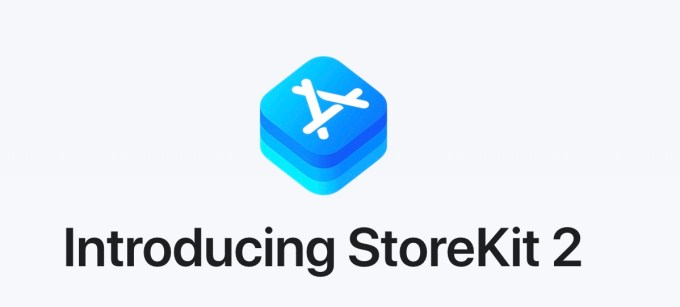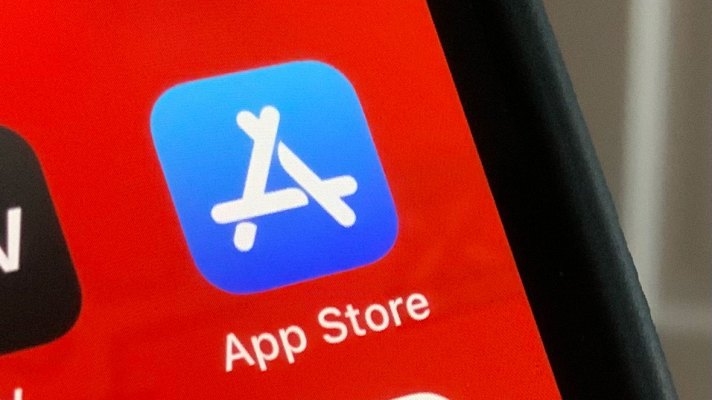Products You May Like
If you’ve ever bought a subscription inside an iOS app and later decided you wanted to cancel, upgrade or downgrade, or ask for a refund, you may have had trouble figuring out how to go about making that request or change. Some people today still believe that they can stop their subscription charges simply by deleting an app from their iPhone. Others may dig around unsuccessfully inside their iPhone’s Settings or on the App Store to try to find out how to ask for a refund. With the updates Apple announced in StoreKit 2 during its Worldwide Developers Conference this week, things may start to get a little easier for app customers.
StoreKit is Apple’s developer framework for managing in-app purchases — an area that’s become more complex in recent years, as apps have transitioned from offering one-time purchases to ongoing subscriptions with different tiers, lengths, and feature sets.

Image Credits: Apple
Currently, users who want to manage or cancel subscriptions can do so from the App Store or their iPhone Settings. But some don’t realize the path to this section from Settings starts by tapping on your Apple ID (your name and profile photo at the top of the screen). They may also get frustrated if they’re not familiar with how to navigate their Settings or the App Store.
Meanwhile, there are a variety of ways users can request refunds on their in-app subscriptions. They can dig in their inbox for their receipt from Apple, then click the “Report a Problem” link it includes to request a refund when something went wrong. This could be useful in scenarios where you’ve bought a subscription by mistake (or your kid has!), or where the promised features didn’t work as intended.
Apple also provides a dedicated website where users can directly request refunds for apps or content. (When you Google for something like “request a refund apple” or similar queries, a page that explains the process typically comes up at the top of the search results.)
Still, many users aren’t technically savvy. For them, the easiest way to manage subscriptions or ask for refunds would be to do so from within the app itself. For this reason, many conscientious app developers tend to include links to point customers to Apple’s pages for subscription management or refunds inside their apps.
But StoreKit 2 is introducing new tools that will allow developers to implement these sort of features more easily.
One new tool is a Manage subscriptions API, which lets an app developer display the manage subscriptions page for their customer directly inside their app — without redirecting the customer to the App Store. Optionally, developers can choose to display a “Save Offer” screen to present the customer with a discount of some kind to keep them from cancelling, or it could display an exit survey so you can ask the customer why they decided to end their subscription.
When implemented, the customer will be able to view a screen inside the app that looks just like the one they’d visit in the App Store to cancel or change a subscription. After cancelling, they’ll be shown a confirmation screen with the cancellation details and the service expiration date.
If the customer wants to request a refund, a new Refund request API will allow the customer to begin their refund request directly in the app itself — again, without being redirected to the App Store or other website. On the screen that displays, the customer can select which item they want refund and check the reason why they’re making the request. Apple handles the refund process and will send either an approval or refund declined notification back to the developer’s server.
However, some developers argue that the changes don’t go far enough. They want to be in charge of managing customer subscriptions and handling refunds themselves, through programmatic means. Plus, Apple can take up to 48 hours for the customer to receive an update on their refund request, which can be confusing.
“They’ve made the process a bit smoother, but developers still can’t initiate refunds or cancellations themselves,” notes RevenueCat CEO Jacob Eiting, whose company provides tools to app developers to manage their in-app purchases. “It’s a step in the right direction, but could actually lead to more confusion between developers and consumers about who is responsible for issuing refunds.”
In other words, because the forms are now going to be more accessible from inside the app, the customer may believe the developer is handling the refund process when, really, Apple continues to do so.
Some developers pointed out that there are other scenarios this process doesn’t address. For example, if the customer has already uninstalled the app or no longer has the device in question, they’ll still need to be directed to other means of asking for refunds, just as before.
For consumers, though, subscription management tools like this mean more developers may begin to put buttons to manage subscriptions and ask for refunds directly inside their app, which is a better experience. In time, as customers learn they can more easily use the app and manage subscriptions, app developers may see better customer retention, higher engagement, and better App Store reviews, notes Apple.
The StoreKit 2 changes weren’t limited to APIs for managing subscriptions and refunds.
Developers will also gain access to a new Invoice Lookup API that allows them to look up the in-app purchases for the customer, validate their invoice and identify any problems with the purchase — for example, if there were any refunds already provided by the App Store.
A new Refunded Purchases API will allow developers to look up all the refunds for the customer.
And a new Renewal Extension API will allow developers to extend the renewal data for paid, active subscriptions in the case of an outage — like when dealing with customer support issues when a streaming service went down, for example. This API lets developers extend the subscription up to twice per calendar year, each up to 90 days in the future.
Another change will help customers when they reinstall apps or download them on new devices. Before, users would have to manually “restore purchases” to sync the status of the completed transactions back to that newly downloaded or reinstalled app. Now, that information will be automatically fetched by StoreKit 2 so the apps are immediately up-to-date with whatever it is the user paid for.
While, overall, the changes make for a significant update to the StoreKit framework, Apple’s hesitancy to allow developers more control over their own subscription-based customers speaks, in part, to how much it wants to control in-app purchases. This is perhaps because it got burned in the past when it tried allowing developers to manage their own refunds.
As The Verge noted last month while the Epic Games-Apple antitrust trial was underway, Apple had once provided Hulu will access to a subscription API, then discovered Hulu had been offering a way to automatically cancel subscriptions made through the App Store when customers wanted to upgrade to higher-priced subscription plans. Apple realized it needed to take action to protect against this misuse of the API, and Hulu later lost access. It has not since made that API more broadly available.
On the flip side, having Apple, not the developers, in charge of subscription management and refunds means Apple takes on the responsibilities around preventing fraud — including fraud perpetrated by both customers and developers alike. Customers may also prefer that there’s one single place to go for managing their subscription billing: Apple. They may not want to have to deal with each developer individually, as their experience would end up being inconsistent.
These changes matter because subscription revenue contributes to a sizable amount of Apple’s lucrative App Store business. Ahead of WWDC 21, Apple reported the sale of digital goods and services on the App Store grew to $86 billion in 2020, up 40% over the the year prior. Earlier this year, Apple said it paid out more than $200 billion to developers since the App Store launched in 2008.

